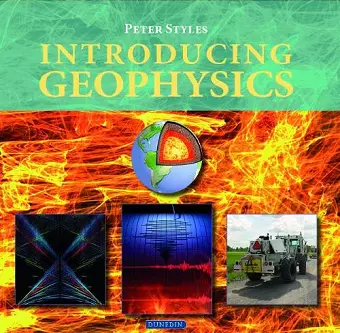Introducing Geophysics
Format:Paperback
Publisher:Liverpool University Press
Published:22nd Apr '21
Should be back in stock very soon

Geophysics is a term that might discourage any but the most inquisitive Earth Scientist but, simply put, it is the study of the Physics of the Earth. As the Earth is very large and relatively slow-moving it is described by the classical Physics disciplines such as heat, gravity, magnetism, electricity, vibrations and waves. Everything we know about the deep Earth, apart from the superficial pinpricks provided by boreholes, we have learned from geophysics. In this approachable and well-illustrated introduction to the many multi-disciplinary facets of geophysics, Peter Styles has kept mathematics to a bare minimum.
The composition of the Earth, its geothermal heat flow and the forces which drive Plate Tectonics and which make the Earth a dynamic system are discussed, as is the application of seismology which allows us to ‘see’ the complex structures which are hidden deep below the surface of our planet. The Earth’s magnetic field and its variations over time are described and we learn how these changes are recorded in sedimentary rocks and the ocean crust, allowing us to chart tectonic plate motions. Earth’s electrical properties and its gravity and the role these play in understanding the deep Earth and its evolution are explained clearly.
A key aspect of the book, as befits a scientist whose working life has been devoted to Applied Geophysics, is a clear detailing of the application of Geophysics to practical matters. While geophysics plays a crucial role in surveying for hydrocarbon and mineral resources; it is also a fundamental environmental tool to look for hidden dangers beneath the surface, such as caves and old mine workings; for managing pollution and environmental hazards; and, most recently, for looking for and monitoring safe and secure places to store our manifold wastes, such as Carbon Dioxide and spent nuclear material. Readers will soon appreciate that the popular perceptions of practical geophysics as used in archaeology or forensics is merely a glimmer of the many crucial applications of this science to all our lives.
‘This book therefore attempts to fiIl a gaping void in knowledge for many people. Not only does it do that, it also serves to show the enormous job that geophysicists do. It's thanks to them that we are able to find and exploit oil and gas reserves and metalliferous deposits. As we've come to expect from this series of Dunedin books. it's well designed with numerous full colour photographs, diagrams and maps. Highly recommended.’ Down to Earth
'This short but informative book is a further addition to the series of introductory books on earth sciences produced by Dunedin. It demonstrates the importance of geophysics in an introductory and engaging way. Almost all of our knowledge about the subsurface of the Earth, from a few tens of metres down to the centre of the core, has come from geophysical studies. Fortunately, the Earth is a large and slow-moving body, so we can ignore both quantum physics and relativity; the principles of geophysics can be developed by the use of classical physics together with mathematics. In this book the author has minimised the maths to make the volume as accessible and attractive as possible… Once the reader has worked through this book, he/she will be in a good position to tackle some of the more advanced books suggested in the ‘Further Reading’ suggestions. The book is well illustrated with clear diagrams and pictures, and supported by a detailed and comprehensive glossary of more than 140 entries that are also referenced back to the main text, doubling its use as an index.' Proceedings of the OUGS
ISBN: 9781780460802
Dimensions: unknown
Weight: 365g
117 pages